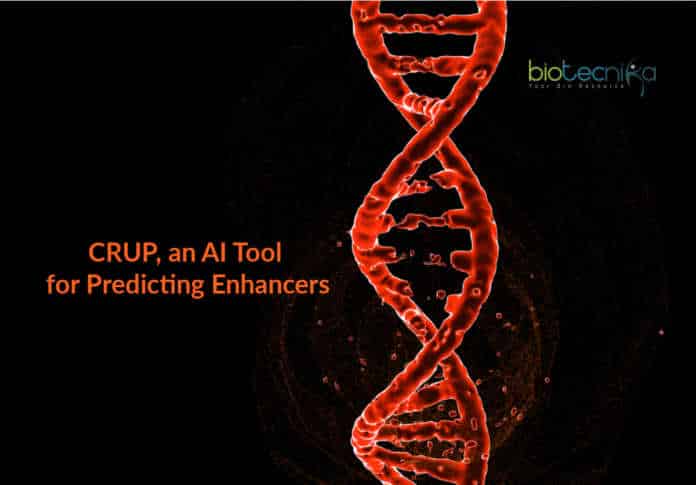CRUP, an artificial intelligence tool to predict enhancers in the genome
Martin Vingron and his team at the Max Planck Institute for Molecular Genetics in Berlin developed a program using artificial intelligence that compares data sets from different cellular conditions, identifies enhancers, and then maps them to their respective genes.
Martin Vingron, Director and Head of the Department of Bioinformatics at the Max Planck Institute for Molecular Genetics in Berlin, said: “DNA is pretty boring since it is practically the same in every cell. When the genome is like the book of life, I am most interested in the side notes”. Martin Vingron is interested in the enhancers of the DNA that do not change the genetic information but influences the gene expression by activating or deactivating the gene at specific sites.
Scientists observed that this regulation of gene expression does not occur properly in many of the diseases. However, the analysis of such regions is complicated, time-consuming, and complex. To overcome this challenge, Martin Vingron and his team developed a new program named Condition-specific Regulatory Units Prediction (CRUP), which makes the task easy and solves many practical problems.
Bioinformatician, Verena Heinrich who developed the package, said that they wanted
to create a universal program that combines all the common steps involved in enhancer prediction. The machine-learning algorithm they developed is not restricted to a specific type of tissue or cell, the program does not need to be calibrated every time before the analysis, and it allows the comparative study of multiple data sets. Moreover, the CRUP tool to predict enhancers is extremely easy to use.Enhancers – The regulators of gene expression
Enhancers are short regions of DNA that attract proteins and help them to bind to the promoter region to enhance the expression of the respective gene. But which enhancer binds to which gene’s promoter is a question mark since the enhancer and gene can be located far away from each other. And there are hundreds of thousands of such enhancers that further complicates it. CRUP identifies and characterizes those specific enhancers.
Enhancers are active at different time points during a cell’s life; for example, some might be active at the growth phase while some others are active at a disease phase. When the DNA is tightly wrapped on the proteins called histones, the enhancer sequences are not accessible and are in a resting phase. When particular chemical modifications happen to the histones, specific regions of DNA unwrap from the histones and get exposed to the proteins that regulate the genes. Chromatin immunoprecipitation (ChIP) of histone proteins, along with DNA sequencing, identifies active and non-active enhancers.
The three-step analysis
The ChIP data becomes the input for CRUP to predict enhancers. In the first step, CRUP analyses the complete sequence to identify the enhancers. Here, artificial intelligence is used to identify the enhancers, by training it with information from mouse embryonic stem cells. Heinrich and her colleagues tested this on multiple data sets provided by the german Epigenome Program (DEEP) to demonstrate its ability to identify enhancers in many other animals.
In the second step, CRUP is fed with multiple data sets to carry out a comparative study and pinpoint differences between tissues. The third step involves the mapping of enhancers to their respective genes. CRUP analysis data, when combined with transcription data and experiments, reveal which part of DNA is active at the same time at the same place.
CRUP was used to identify and compare the enhancer regions in mice with rheumatoid arthritis with that of healthy mice. They were able to detect 200 differences in enhancer regions, some of the enhancers, and some mapped genes already known for the diseases.
The team could successfully identify the disease-associated enhancers and map them to the respective genes. The team believes that CRUP will accelerate research to identify the underlying causes of many human diseases.
Editors Note; CRUP to predict enhancers, Max Planck Institute for Molecular Genetics, Developed program using artificial intelligence.
Author: Namitha Thampi





























